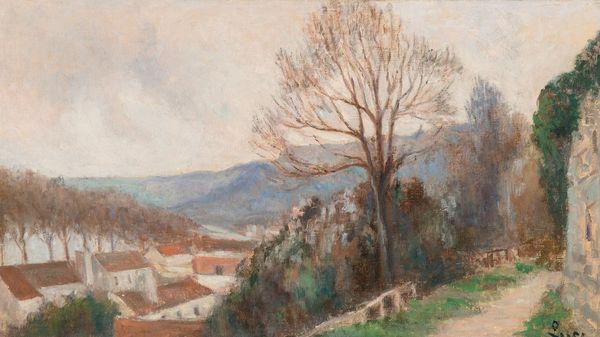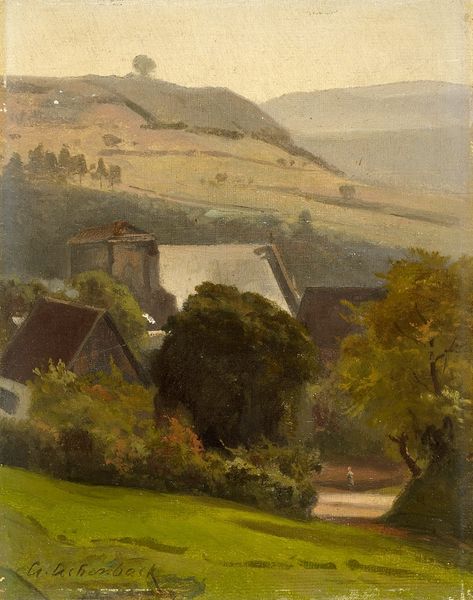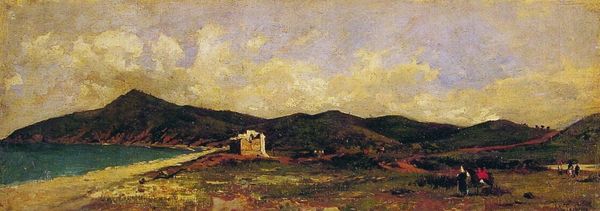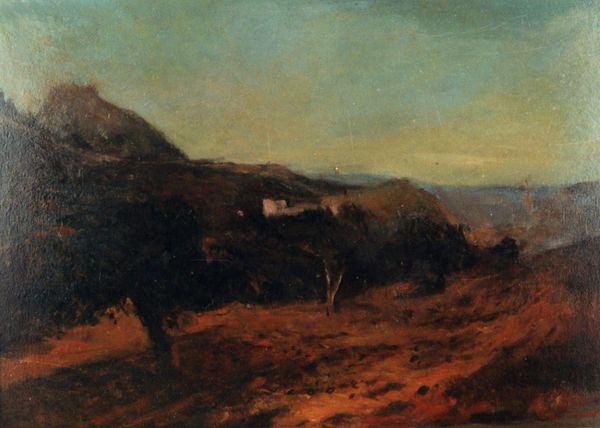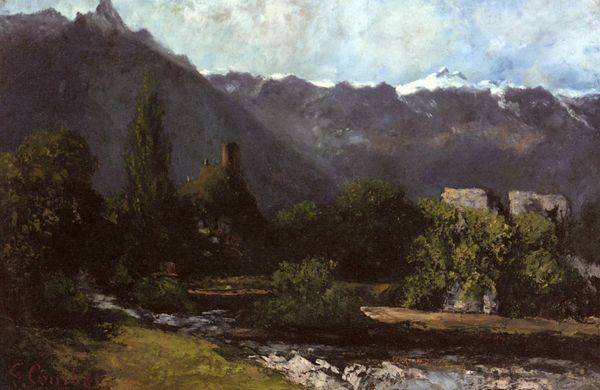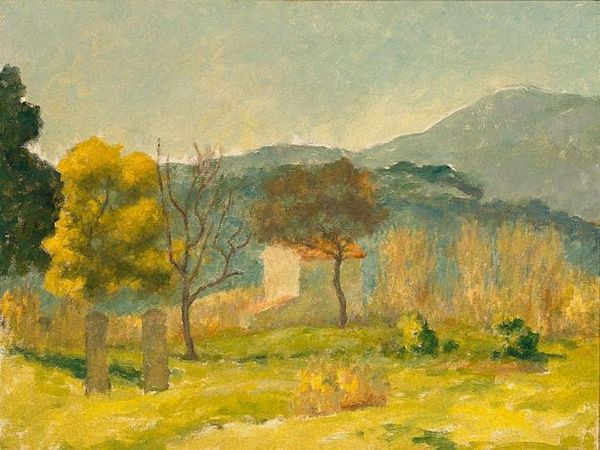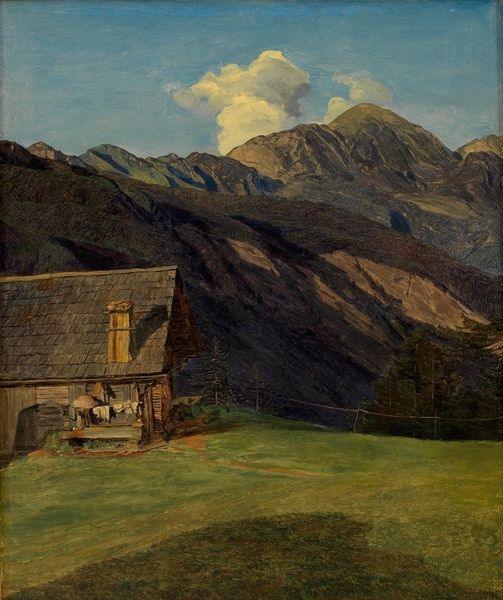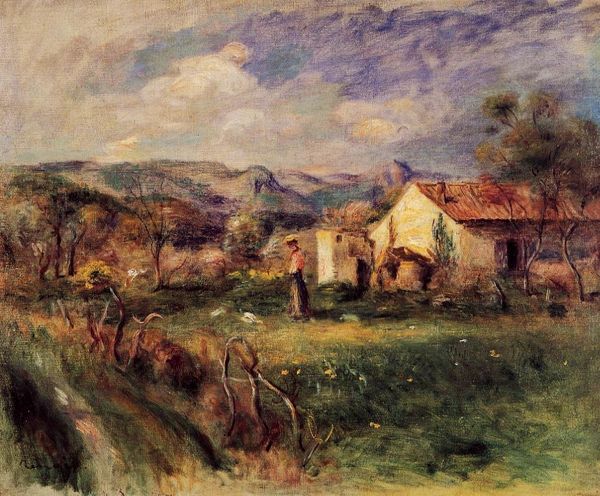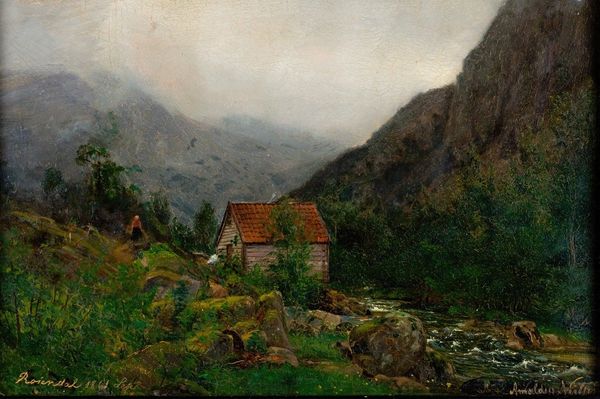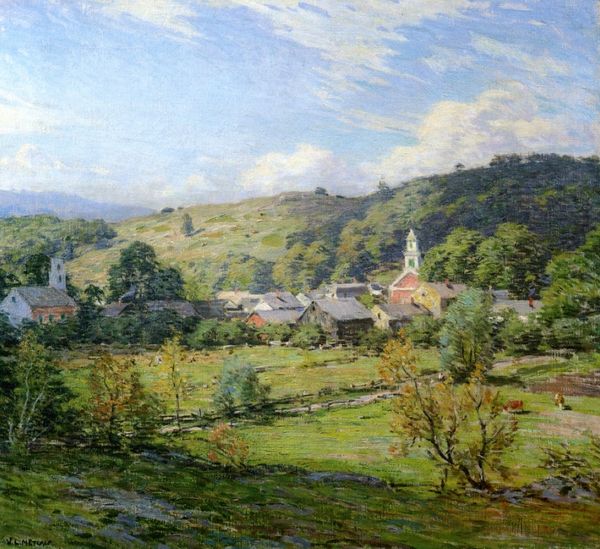
Mountain Landscape at Saint Thomas, Antilles (unfinished) 1855
0:00
0:00
camillepissarro
Private Collection
Dimensions: 27.2 x 34.9 cm
Copyright: Public domain
Curator: This is Camille Pissarro's "Mountain Landscape at Saint Thomas, Antilles," painted in 1855. He was quite young then, wasn’t he? Editor: A fascinating early work. It's unfinished, isn't it? You can see that glaring white patch, unresolved, in the foreground. But the rest… a real sense of a humid, vibrant place. Curator: Yes, unfinished, and that’s what gets me. It’s like a glimpse into the creative process itself. The rapid brushstrokes, especially in the foliage, almost thrum with energy. You feel the heat of the island, right? Editor: Absolutely, and consider that 'heat' in terms of labor. Who built those humble structures nestled in the landscape? Pissarro, moving from France to St. Thomas, was undoubtedly struck by the architecture shaped by colonial dynamics. Materials sourced locally, adapted for the climate, likely constructed by enslaved or recently emancipated people. It speaks volumes about unseen hands. Curator: You always bring it back to the hands! Which is a good thing, I suppose. I look at that little figure walking uphill with a load, and I can’t help but imagine her story, a lifetime of sun and sweat. But also, look at how Pissarro uses light! It feels almost dreamlike, you know? As if he's painting a feeling as much as a place. Editor: Light is work in itself. How were pigments sourced? Ground? Mixed with oil, most likely locally-sourced linseed, to capture this tropical brilliance? It's about material knowledge. The canvas, too - what were its origins, and who prepared it? Every visible and invisible element is bound up in a complex web of making. Curator: Okay, but for a moment, imagine you're there. The smells, the sounds. That’s what this painting captures, doesn't it? Before he even came to paint in an impressionistic style, Pissarro was evoking the sensual reality around him, no? Editor: Sensuality rooted in social and economic structures, always. Pissarro's eye wasn't separate from his time and place. Seeing the labor and materiality doesn’t detract from beauty. Curator: Maybe it adds another layer, a depth of understanding. To really see it is to appreciate it’s historical background. Editor: Exactly, it’s not enough just to consider "what it represents", but the real conditions under which that representation was produced and the human implication of the whole piece of work. Curator: Well said, there is real substance there when you think of the people who lived and worked on that little island in 1855. Thanks for sharing this view.
Comments
No comments
Be the first to comment and join the conversation on the ultimate creative platform.
